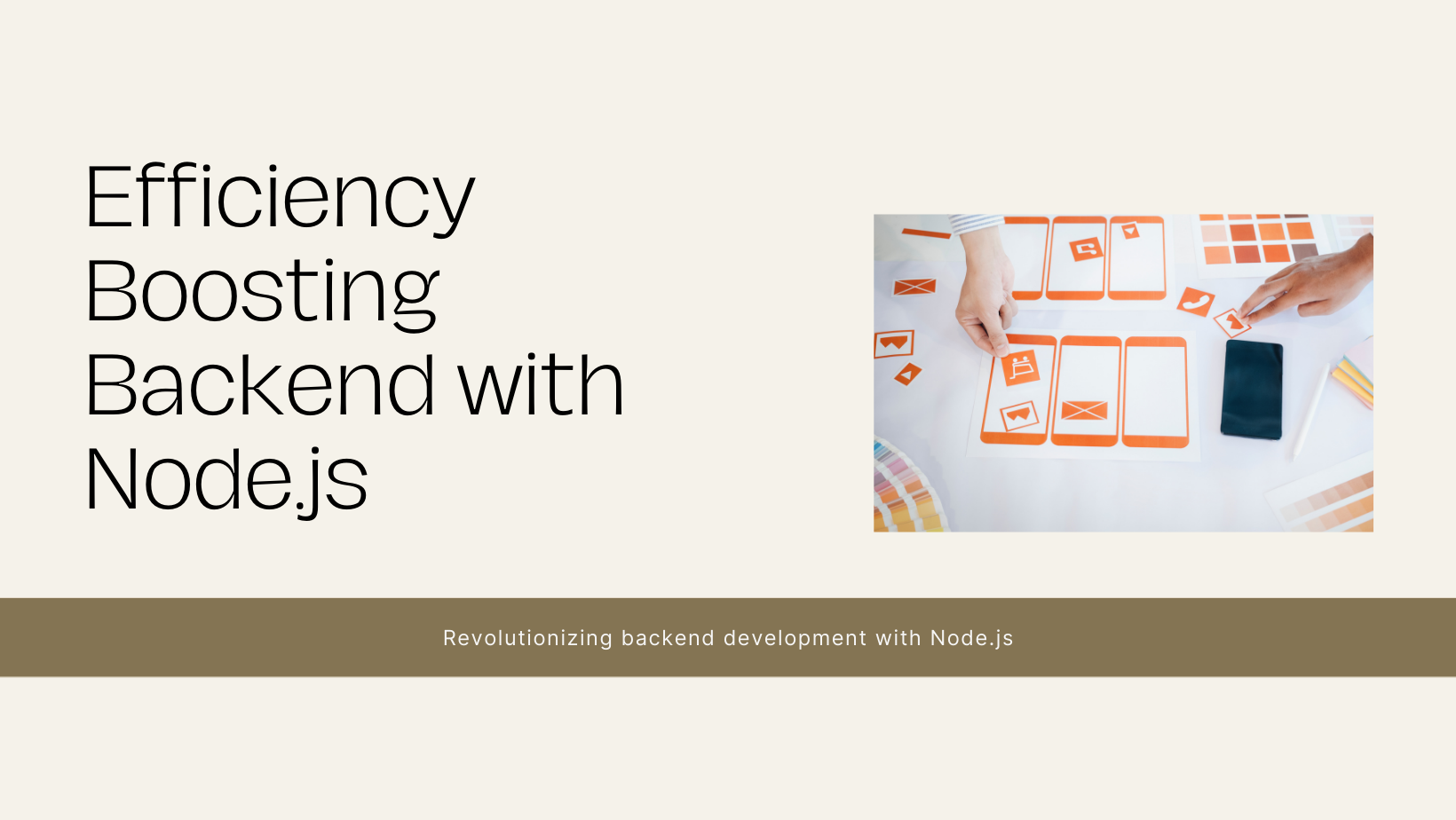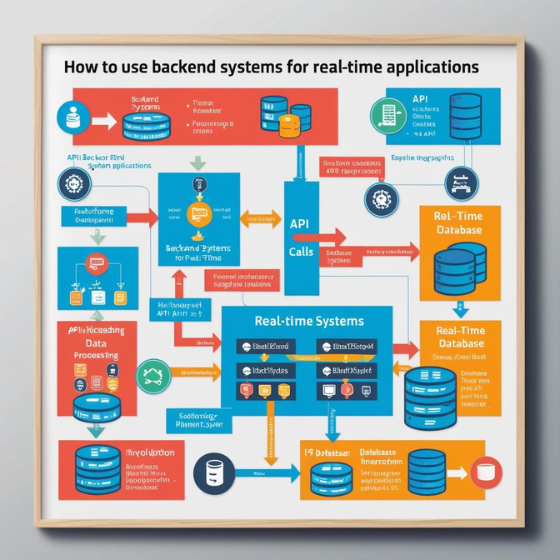In the world of backend development, efficiency is key to creating scalable and high-performance applications. Node.js has emerged as a powerful tool that significantly enhances backend development efficiency. By leveraging its non-blocking architecture, single-threaded event loop, and a rich ecosystem of modules, Node.js streamlines the development process and boosts productivity. This blog explores the impact of Node.js on backend development efficiency, highlighting its key advantages, practical benefits, and real-world use cases.
Understanding Node.js and Its Architecture
What is Node.js?
Node.js is an open-source runtime environment that allows developers to build server-side applications using JavaScript. It is built on Chrome’s V8 JavaScript engine, known for its speed and efficiency. Node.js uses an event-driven, non-blocking I/O model, which enables it to handle multiple requests simultaneously without waiting for one task to complete before starting another.
Event-Driven Architecture
The core of Node.js’s efficiency lies in its event-driven architecture. Unlike traditional server models that use a multi-threaded approach, Node.js operates on a single-threaded event loop. This model allows it to process numerous requests concurrently by delegating I/O operations to the operating system and continuing to handle other tasks. This non-blocking approach reduces overhead and enhances performance.
Enhancing Development Speed
Rapid Prototyping
Node.js is highly favored for rapid prototyping due to its lightweight nature and fast execution. Developers can quickly build and test prototypes, iterate on designs, and deploy applications with minimal overhead. The extensive use of JavaScript on both the client and server sides also streamlines the development process, as developers can use a single language across the entire stack.
NPM and Package Ecosystem
The Node Package Manager (NPM) is a key component in boosting development efficiency. With its vast repository of open-source libraries and modules, NPM allows developers to quickly integrate third-party tools and functionalities into their applications. This reduces the need to reinvent the wheel and accelerates development by providing pre-built solutions for common tasks.
Improving Performance and Scalability
Non-Blocking I/O Operations
One of the standout features of Node.js is its non-blocking I/O operations. Traditional server environments often use synchronous I/O calls, which can lead to bottlenecks and delays when handling multiple requests. Node.js’s non-blocking approach ensures that the server remains responsive and can handle many concurrent connections efficiently, making it ideal for high-traffic applications.
Scalability Through Microservices
Node.js excels in building scalable applications through microservices architecture. Microservices involve breaking down an application into smaller, independent services that can be developed, deployed, and scaled individually. Node.js’s lightweight and modular nature fits perfectly with this approach, allowing developers to create scalable and maintainable systems that can grow with user demand.
Streamlining Development and Maintenance
Unified Development Language
Using JavaScript for both frontend and backend development simplifies the development process and reduces context switching for developers. This unified approach streamlines communication between teams and enhances code consistency, leading to fewer errors and more efficient development cycles.
Efficient Code Management
Node.js promotes modularity through its use of modules and packages. Developers can organize code into reusable components, making it easier to manage and maintain. The modular nature of Node.js also facilitates better code organization and simplifies the process of updating or replacing components without affecting the entire application.
Enhancing Real-Time Capabilities
Real-Time Communication
Node.js is well-suited for applications that require real-time communication, such as chat applications, live streaming, and collaborative tools. Its event-driven model allows it to handle real-time data efficiently, making it a popular choice for applications that need to push updates to clients instantly.
WebSockets Integration
WebSockets, a protocol that provides full-duplex communication channels over a single TCP connection, is seamlessly integrated with Node.js. This capability enables developers to build interactive applications that can handle real-time updates and notifications without the need for constant polling.
Case Studies of Node.js in Action
Successful Implementations
Several high-profile companies have successfully leveraged Node.js to enhance their backend development efficiency. For example:
- Netflix: Netflix uses Node.js to handle high volumes of requests and provide a seamless streaming experience. Node.js’s performance and scalability have helped Netflix manage its massive user base and deliver content efficiently.
- LinkedIn: LinkedIn adopted Node.js to streamline its mobile backend services. The switch to Node.js allowed LinkedIn to improve performance, reduce server response times, and handle increased traffic with greater efficiency.
- Uber: Uber employs Node.js to build its real-time processing system, allowing it to handle large volumes of data and provide accurate ride tracking and matching services. Node.js’s non-blocking I/O model has been instrumental in optimizing Uber’s backend operations.
Addressing Common Challenges
Handling CPU-Intensive Tasks
While Node.js excels in handling I/O-bound operations, CPU-intensive tasks can pose a challenge due to its single-threaded nature. To address this, developers can use techniques such as offloading heavy computations to worker threads or leveraging microservices to distribute the load across multiple processes.
Ensuring Security
Security is a critical consideration in backend development. Node.js provides various security modules and best practices to help developers secure their applications. Implementing proper authentication, validation, and data protection measures is essential to safeguard against potential vulnerabilities.
Future Prospects of Node.js in Backend Development
Growing Ecosystem and Community
The Node.js ecosystem continues to evolve, with a growing number of libraries, tools, and frameworks being developed by the community. This ongoing innovation promises to further enhance backend development efficiency and address emerging challenges in the industry.
Integration with Emerging Technologies
Node.js is also expanding its role in integrating with emerging technologies such as IoT (Internet of Things), serverless computing, and machine learning. These advancements are expected to open new avenues for leveraging Node.js in backend development and maintaining its relevance in a rapidly changing technological landscape.
Conclusion
Node.js has made a significant impact on backend development efficiency through its performance, scalability, and developer-friendly features. By leveraging its non-blocking I/O model, extensive package ecosystem, and real-time capabilities, Node.js streamlines the development process and enhances productivity. As the technology continues to evolve, its role in backend development is likely to grow, offering even greater opportunities for efficiency and innovation.







